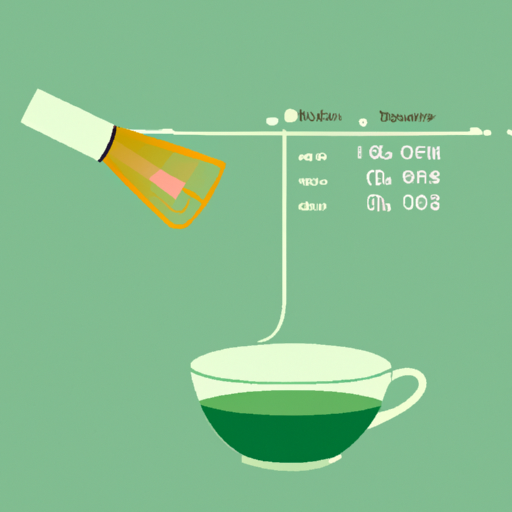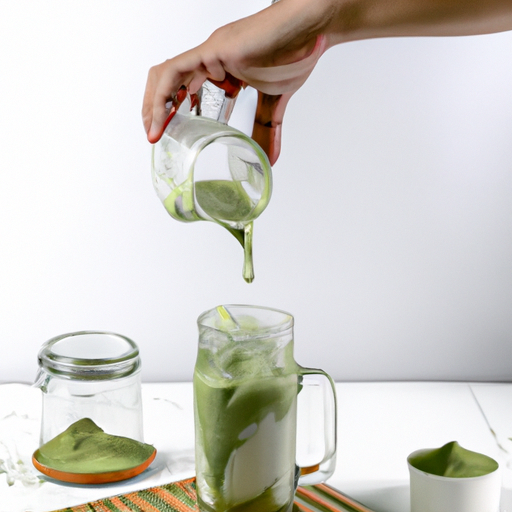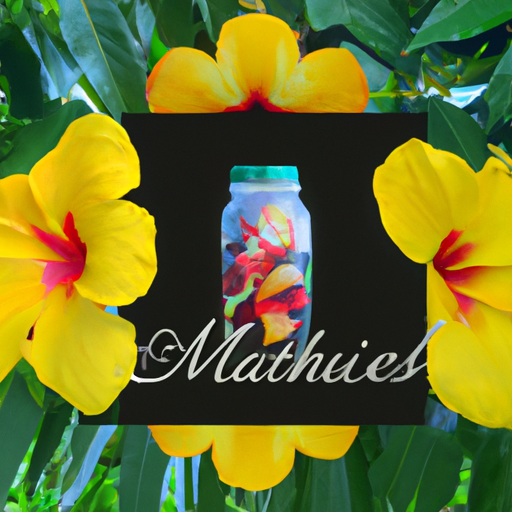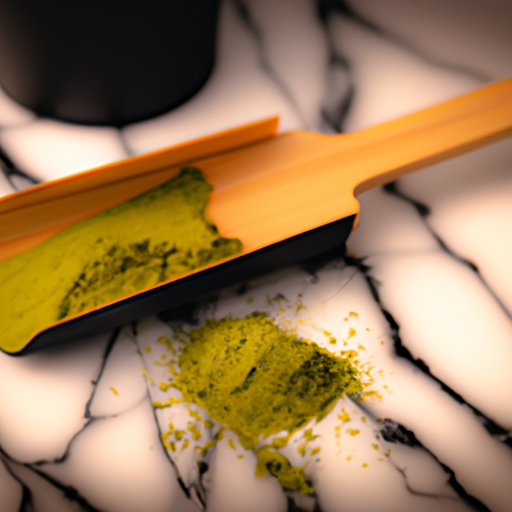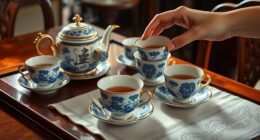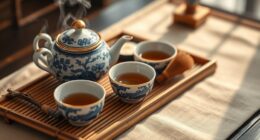As someone who is passionately fond of matcha, I recognize the critical role that water temperature plays in crafting the ideal cup of matcha. Achieving the correct temperature for the water is crucial, as it significantly impacts the taste of matcha, determining whether it turns out delightful or disappointing.
In this article, I’ll share my knowledge and experience on what temperature water should be for matcha, and the different methods to achieve the right temperature.
Matcha is a finely ground powder made from shade-grown tea leaves, and it’s a staple in Japanese tea ceremonies and culture. The flavor profile of matcha is complex and delicate, with notes of umami, sweetness, and bitterness.
To bring out the best of matcha, it’s crucial to use the right water temperature for brewing. In this article, we’ll explore the factors that affect water temperature, the recommended ranges, and the different methods to achieve the perfect temperature for your matcha.
So, grab your matcha whisk and let’s get started!
Key Takeaways
- Water temperature is crucial when preparing matcha.
- The ideal water temperature for matcha is between 160-180°F.
- Using water that’s too hot can result in a bitter taste.
- Using water that’s too cold can produce a lackluster flavor.
The Importance of Water Temperature in Matcha Preparation
You’ll want to make sure you don’t ruin your matcha’s flavor by using water that’s too hot or too cold – getting the temperature just right is crucial for a truly satisfying matcha experience!
The ideal water temperature for matcha varies between 160°F to 180°F, which is just below boiling point. Water quality plays a vital role in flavor extraction as well, so it’s important to use filtered or spring water instead of tap water.
Using water that’s too hot can result in a bitter taste while water that’s too cold can produce a flat and lackluster flavor. When water is too hot, the heat can break down the amino acids and chlorophyll in matcha, resulting in a bitter taste. If the water is too cold, it won’t be able to extract the full flavor of matcha, leaving you with a lackluster cup of tea.
Understanding the flavor profile of matcha is essential for a truly enjoyable experience. By using the right water temperature, you can bring out the best of matcha’s naturally sweet, umami, and slightly bitter flavor notes.
So, make sure to pay attention to the water temperature and quality when preparing your matcha, and you’ll be rewarded with a delicious cup of tea!
Understanding the Flavor Profile of Matcha
Ah, the exquisite taste of matcha – a delicate balance of umami and sweetness that can only be achieved through the careful cultivation and preparation of the revered tea leaves. As a matcha enthusiast, I’ve come to appreciate the nuanced flavor notes that come with each cup.
Understanding the flavor profile of matcha is crucial in achieving the perfect cup, and taste testing is a great way to familiarize yourself with the different taste elements.
Here are some of the flavor notes you can expect to find in matcha:
-
Umami: This is the savory flavor that’s characteristic of matcha. It’s a result of the amino acids in the tea leaves.
-
Sweetness: Matcha has a natural sweetness that’s balanced by the umami flavor.
-
Bitterness: When matcha’s prepared incorrectly, it can become bitter. However, when prepared correctly, the bitterness is subtle and complements the other flavors.
Taste testing is a great way to train your palate and understand the flavor profile of matcha. You can do this by preparing different cups of matcha at various temperatures and noticing the differences in taste. For example, matcha prepared with water that’s too hot will be more bitter, whereas matcha prepared with water that’s too cold will be less flavorful.
Understanding the flavor profile of matcha is just one aspect of achieving the perfect cup. Factors affecting water temperature play a crucial role in the preparation process and will be discussed in the next section.
Factors Affecting Water Temperature
When it comes to making the perfect matcha, paying attention to the water temperature is crucial.
There are several factors that can affect the ideal water temperature for matcha. These factors include the grade of the matcha, the quality of the water, and the ratio of matcha to water.
As someone who enjoys a good cup of matcha, I’ve learned that taking these factors into consideration can make all the difference in the flavor and quality of the final product.
Matcha Grade
If you’re looking for a high-quality matcha, you’ll want to consider the grade of the tea. Matcha grading is based on the location of the tea leaves on the plant, with higher grades coming from younger, more tender leaves. The highest quality matcha, ceremonial grade, is made from the youngest leaves and is known for its vibrant green color, smooth texture, and sweet taste.
The next grade down is premium grade, which is still high quality but may have a slightly bitter taste. Standard grade, the lowest quality matcha, is made from older leaves and has a more dull color and grainy texture.
When it comes to brewing techniques, the grade of matcha you’re using will affect the water temperature you should aim for. For ceremonial grade matcha, you’ll want to use water that is between 160-170°F (71-77°C). This lower temperature ensures that the delicate flavors and aromas of the tea are not lost during the brewing process.
For premium and standard grade matcha, a slightly higher temperature of 170-180°F (77-82°C) is recommended to better release the flavors of the tea. However, it’s important to note that the temperature of the water is just one factor in making a great cup of matcha. The quality of the water itself, as well as the whisking technique, are also important considerations for achieving the perfect cup.
Water Quality
To achieve the best quality matcha, you’ll want to ensure the purity and mineral content of your water is at an optimal level. The quality of water you use can greatly impact the taste and texture of your matcha. Therefore, it’s important to consider the mineral content and filtration of your water.
Water filtration is a crucial aspect of preparing matcha. Tap water, for example, tends to contain impurities such as chlorine and other minerals that can affect the taste of your tea. Using filtered or purified water can help eliminate these impurities and provide a cleaner taste. Additionally, the mineral content of the water can also affect the taste of your matcha. Hard water, which has a higher mineral content, can make the tea taste bitter. On the other hand, soft water, which has a lower mineral content, can make the tea taste flat. Therefore, it’s recommended to use water with a balanced mineral content to achieve the best flavor and texture for your matcha.
Now that we’ve discussed the importance of water quality, let’s move on to the next step of preparing the perfect matcha: the matcha-to-water ratio.
Matcha-to-Water Ratio
Now that we’ve talked about the importance of water quality in preparing matcha, let’s move on to the next step: getting the matcha-to-water ratio just right. Achieving the perfect consistency of matcha can be a bit tricky, but it’s one of the most important aspects in making a delicious cup of matcha.
To get started, you’ll need to measure out the amount of matcha powder you’ll be using. A good rule of thumb is to use about 1 teaspoon of matcha powder for every 2-4 ounces of water. It’s important to measure out the matcha precisely to avoid ending up with a clumpy or watery consistency. Once you’ve measured out the matcha, sift it through a fine mesh strainer to ensure that there are no lumps or clumps in the powder.
Now that we’ve got the matcha-to-water ratio sorted out, let’s dive into the recommended water temperature ranges for preparing matcha.
Recommended Water Temperature Ranges
The optimal temperature range for water when preparing matcha is between 160°F and 175°F. This temperature range allows for the full flavor profile of the matcha to be extracted, without it becoming too bitter.
Here are four things to keep in mind when using water to make matcha:
- Boiling water is too hot for matcha and can make it taste bitter.
- Water that’s too cool won’t extract the full flavor of the matcha.
- It’s important to use fresh, filtered water to ensure the best taste.
- The brewing time shouldn’t be longer than 2 minutes to prevent over-extraction.
Achieving the right water temperature can be done through different methods such as using a thermometer or simply boiling water and waiting for it to cool down to the desired temperature. It’s important to pay attention to the water temperature when making matcha to ensure the best possible taste.
Up next, we’ll explore different methods for achieving the right water temperature without compromising the quality of the matcha.
Different Methods for Achieving the Right Water Temperature
Are you tired of guessing the perfect water temperature for your matcha? Don’t worry, there are easy methods you can use to achieve the ideal water temperature every time.
One important factor is to determine whether you want to boil or cool the water. Boiling water is the traditional way to prepare matcha, but it can result in a bitter taste. On the other hand, cooling the water to a specific temperature, usually between 160°F and 175°F, can result in a sweeter and more balanced taste.
Another factor to consider is the method of heating the water. Electric kettles are a convenient and efficient way to heat water, but they can also heat the water too quickly, resulting in a bitter taste. Stovetop kettles, on the other hand, allow for more control over the heating process, but can also be more time-consuming. Ultimately, it comes down to personal preference and what works best for you.
Once you have determined the best method for achieving the ideal water temperature for your matcha, it’s time to prepare your equipment. This includes making sure your matcha bowl and whisk are clean and dry, and your matcha powder is sifted to prevent clumping.
With the right water temperature and equipment, you can enjoy a delicious and authentic cup of matcha every time.
Preparing Your Equipment
To ensure a perfect cup of matcha, it’s essential that you have clean and dry equipment, as well as sifted powder to prevent clumping. Choosing the right equipment is crucial in achieving the perfect cup of matcha. I recommend using traditional Japanese tools such as a chawan (matcha bowl), chasen (bamboo whisk), and chashaku (bamboo scoop) to create an authentic and enjoyable experience.
Measuring the ingredients accurately is also important. Use a chashaku to measure out one scoop of matcha powder, which is equivalent to about half a teaspoon. It’s important to note that using too much or too little matcha powder can result in a bitter or weak taste, respectively.
In addition to the tools and ingredients, it’s important to keep your equipment clean and dry. Before preparing your matcha, make sure to clean your chawan and chasen with warm water and dry them thoroughly. Any moisture left in your tools can affect the taste and texture of your matcha.
With your equipment and ingredients prepped and ready, you’re now one step closer to preparing your perfect cup of matcha.
Now that your equipment is set up and your ingredients are measured, it’s time to move onto the next step: preparing your matcha.
Preparing Your Matcha
Now it’s time for me to prepare my matcha and experience the unique flavor and aroma that this traditional Japanese beverage has to offer. In order to achieve the perfect cup of matcha, it’s important to follow the ceremonial preparation method.
This involves using a traditional bamboo whisk, a chawan (matcha bowl), and a chasen (matcha whisk). To start, I need to add one teaspoon of matcha powder into my chawan.
Then, I’ll pour hot water into the bowl at a temperature of around 175°F to 180°F. It’s important not to use boiling water as it’ll burn the matcha and create a bitter flavor. I’ll then use my chasen to whisk the matcha in a zig-zag motion until it becomes frothy and smooth.
Whisking technique is crucial in creating the perfect matcha. The goal is to create a smooth, creamy consistency with a rich green color. It’s important to whisk the matcha quickly and vigorously, ensuring that there are no clumps or lumps.
Once the matcha is whisked to perfection, I can move on to the next step of enjoying my delicious cup of matcha. Transitioning into the subsequent section, whisking the matcha properly takes practice and patience. It’s important to master the whisking technique to achieve the perfect cup of matcha.
Whisking Your Matcha
As you’re whisking your matcha, feel the exhilarating rush of the frothy green liquid swirling beneath your fingertips like a tidal wave of flavor.
Achieving the perfect frothy consistency is key to enjoying the full flavor and benefits of matcha. To achieve this, it’s important to use the proper whisking technique and choose the right whisk.
When whisking matcha, it’s best to use a bamboo whisk, also known as a chasen. The fine, delicate tines of the whisk allow for a smooth, consistent texture. It’s also important to use water that’s just under boiling, around 175-180°F. Water that’s too hot can scorch the matcha and result in a bitter taste.
To achieve the perfect frothy consistency, start by pouring a small amount of hot water into your matcha bowl or cup. Next, add the matcha powder and use the bamboo whisk to mix the two ingredients together in a back-and-forth motion until a thick paste forms.
Then, add more hot water and use a brisk, circular motion to whisk the matcha until it becomes frothy. This process should take around 15-20 seconds.
Now that your matcha is perfectly whisked, it’s time to move on to the next step: serving and enjoying your matcha.
Serving and Enjoying Your Matcha
Indulging in the rich and complex flavors of a perfectly whisked matcha requires savoring each sip and taking in the subtle notes of umami and sweetness. However, one crucial aspect of enjoying matcha is serving it at the right temperature. In traditional Japanese matcha ceremonies, water is heated to a specific temperature range depending on the season. During the cooler months, water is heated to a higher temperature to balance out the coldness of the season, while in warmer months, water is heated to a lower temperature to create a refreshing and cooling effect.
To ensure that your matcha is served at the right temperature, it’s crucial to pay close attention to the water temperature. Ideally, water should be heated to a temperature range between 160°F to 180°F. This temperature range allows the matcha to fully dissolve and release its flavors and aromas without scorching the delicate tea leaves. To make it easier, you can use a thermometer to measure the water temperature accurately.
Serving matcha is not just about the perfect temperature, it also has cultural significance. In Japanese culture, the matcha ceremony is a symbol of hospitality and respect. It’s a ritual that involves carefully preparing and serving matcha to guests, often accompanied by traditional Japanese sweets. The host of the ceremony prepares the matcha with utmost care, taking into consideration the guests’ preferences and dietary restrictions. This tradition has been passed down for generations and is still practiced today. By serving matcha, we not only enjoy its flavors and health benefits, but we also honor its rich cultural heritage.
Transitioning into the subsequent section about ‘tips and tricks for the perfect cup of matcha,’ there are various methods and techniques to prepare matcha, each with its unique flavor and texture. By experimenting with different methods, you can find the perfect matcha recipe that suits your taste preferences.
Tips and Tricks for the Perfect Cup of Matcha
To achieve the perfect cup of matcha, you’ll want to start by using high-quality ceremonial grade powder. Once you have your powder, it’s important to prepare it properly.
There are many matcha preparation techniques, but the most common method is to sift the powder into a bowl, add hot (not boiling) water, and whisk until frothy. The water temperature should be around 175°F to 180°F, which is just below boiling.
In addition to the preparation technique, there are also flavor enhancing ingredients that you can add to your matcha. Some people like to add a touch of honey or agave to sweeten it up, while others prefer to add a pinch of salt to enhance the umami flavor. Another popular ingredient is milk, which can be added to make a matcha latte.
However, it’s important to note that adding milk will change the flavor profile and may also affect the health benefits of matcha.
Overall, the key to the perfect cup of matcha is to experiment with different techniques and ingredients until you find the combination that works best for your taste buds. Don’t be afraid to try new things and have fun with it! With a little practice and experimentation, you’ll be able to make a delicious and healthy cup of matcha in no time.
Frequently Asked Questions
What are some common mistakes people make when preparing matcha?
When it comes to preparing matcha, there are several common mistakes that people often make.
One of the most prevalent is not sifting the matcha powder beforehand, which can result in clumps and a less smooth texture.
Another mistake is using water that is too hot, as this can make the matcha bitter and unpleasant.
Additionally, not whisking the matcha properly can result in a lack of froth and a weaker flavor.
To avoid these mistakes, it’s important to sift the matcha, use water that is around 175°F, and whisk vigorously in a zigzag motion until a frothy layer forms on top.
Other preparation tips include using high-quality matcha powder, using a bamboo whisk, and adding a sweetener or milk if desired.
How does the water temperature affect the caffeine content in matcha?
Wow, let me tell you, the water temperature can really make or break your matcha experience! I mean, it’s not just about the taste and texture, but also the caffeine content.
You see, the hotter the water, the more caffeine is extracted from the matcha powder. However, you don’t want to scorch the delicate tea leaves either. That’s where optimal brewing conditions come in.
Generally, the water temperature should be around 175-180°F (79-82°C) for matcha. This allows for a balance of caffeine absorption and flavor extraction. Trust me, I’ve tried all sorts of water temperatures and this range is the sweet spot.
So, next time you prepare matcha, make sure to pay attention to the water temperature and enjoy the perfect cup every time!
Can I use tap water or do I need to use filtered water for matcha?
When it comes to making matcha, the quality of water you use can make a big difference in taste. While some people swear by using filtered water for matcha, I personally find that tap water works just fine. It really depends on the quality of your tap water and how sensitive your tastebuds are.
That being said, I do think it’s important to use fresh water each time you make matcha, rather than reusing water from a previous session. This ensures that the water is clean and free from any lingering flavors or impurities that could affect the taste of the matcha.
Overall, I believe that the taste difference between tap water and filtered water for matcha is subtle, so it’s really up to personal preference.
Are there any health benefits to drinking matcha at a certain water temperature?
When it comes to drinking matcha, the water temperature can have an impact on both flavor and nutritional value. While there may not be specific health benefits tied to drinking matcha at a certain water temperature, it’s important to pay attention to the brewing process in order to get the most out of this beverage.
If the water is too hot, it can scorch the delicate matcha leaves and leave a bitter taste. On the other hand, if the water is too cool, the matcha may not fully dissolve and you could be missing out on some of the nutrients. As a general rule of thumb, water should be heated to around 175 degrees Fahrenheit for optimal brewing.
Can I reuse water from a previous matcha session or do I need to start with fresh water each time?
Have you ever wondered if it’s okay to reuse water from a previous matcha session? Well, the answer is no.
For the best results, it’s important to start with fresh water each time you make matcha. Reusing water can affect the taste and quality of your matcha, as well as potentially introduce bacteria into your drink.
While it may seem like a small detail, using fresh water is a crucial step in achieving the perfect cup of matcha. So, if you want to fully experience the health benefits and delicious taste of matcha, always start with fresh water.
Conclusion
In the world of matcha, water temperature is crucial. It can affect the flavor, texture, and overall experience of your matcha. As someone who enjoys matcha on a regular basis, I’ve learned that finding the right water temperature is like finding the key to a treasure chest. It unlocks the full potential of the matcha, allowing you to savor every sip.
Matcha is like a delicate flower, waiting to bloom. When the water temperature is too high, it can scorch the leaves and leave a bitter taste. On the other hand, if the water temperature is too low, the matcha won’t dissolve properly and you’ll end up with a clumpy mess.
It takes patience and practice to find the perfect water temperature for your matcha, but once you do, it’s like discovering a hidden gem. So take the time to experiment and find what works best for you. Your taste buds will thank you for it.
In the end, the right water temperature is like a conductor leading an orchestra. It brings out the harmonious flavors of the matcha and allows them to shine.
So the next time you prepare your matcha, remember the importance of water temperature and treat it with care. Your matcha will reward you with a delightful experience, like a sweet melody playing in your mouth.

